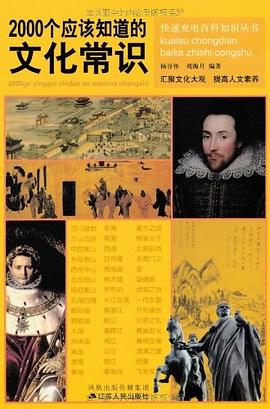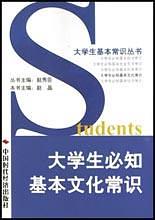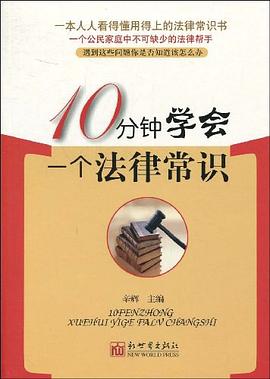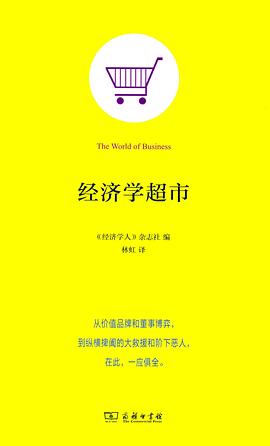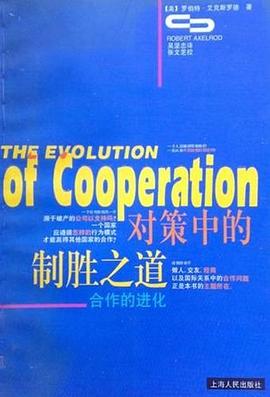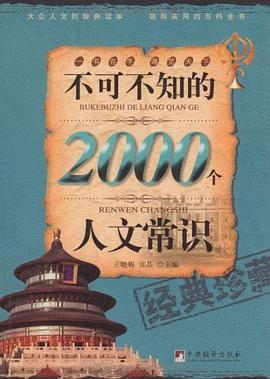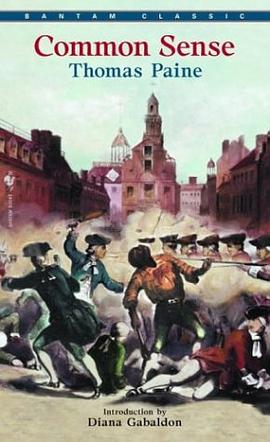

具体描述
When Common Sense was published in January 1776, it sold, by some estimates, a stunning 150,000 copies in the colonies. What exactly made this pamphlet so appealing? This is a question not only about the state of mind of Paine's audience, but also about the role of public opinion and debate, the function of the press, and the shape of political culture in the colonies. This Broadview edition of Paine’s famous pamphlet attempts to reconstruct the context in which it appeared and to recapture the energy and passion of the dispute over the political future of the British colonies in North America. Included along with the text of Common Sense are some of the contemporary arguments for and against the Revolution by John Dickinson, John Adams, and Thomas Jefferson; materials from the debate that followed the pamphlet's publication showing the difficulty of the choices facing the colonists; the Declaration of Independence; and the Pennsylvania Constitution of 1776.
作者简介
Thomas Paine was born in Norfolk, England, on January 29, 1737. He received a basic education in history, mathematics, and science, but left school at age 13 to apprentice in his father's corsetmaking shop. In 1757, he spent time at sea aboard the privateer ship King of Prussia, and later found employment as a journeyman staymaker in London. All the while, Paine continued to study on his own, influenced by the work of two leading figures of the Enlightenment, Isaac Newton and John Locke. He began writing political pamphlets, and at the urging of Benjamin Franklin, emigrated to Philadelphia in 1774 to work as an editor for The Pennsylvania Magazine. In 1776, he published Common Sense, which called for America's political freedom from England. The pamphlet sold more than 150,000 copies in three months. Paine next published The American Crisis during the Revolutionary War, inspiring George Washington to read it to his troops at Valley Forge. By the end of the Revolution, however, Paine's influence had run its course, and he fell out of political favor. He returned to Europe, where he published his treatise Rights of Man, which led to his arrest on charges of high treason. Disillusioned with life abroad, he returned to the U.S. to find himself vilifed as an agitator and atheist. He died in obscurity in New York City in 1809.
Diana Gabaldon is the New York Times bestselling author of five previous novels -- Outlander, Dragonfly in Amber, Voyager,
目录信息
读后感
有时他会说出一串精彩的脏话。但更多的时候他让我们发现身陷笑柄。 “专制政体有着如下好处,那就是它们来得十分简单,如果人们受苦受难,他们终会知道他们的灾难时从谁的头脑中产生出来的,也会知道补救的办法,没有形形色色的原因和救苦救难的方法使他们手足无措。' ...
评分首先,翻译得太差了。 改天等自己英文进步的时候再看英文版的。 书中论述的政府、人与社会的关系大概是人人都能看懂的。我现在明白为什么美国人时时刻刻处处讲自由民主人权,因为他们的国家就是在这样的思考下诞生的。 相比之下,我们的国家似乎因为历史的悠久反而丧失了思考的...
评分读完潘恩的《常识》,我先是感觉到思想的伟大,继而又感觉到一丝迷惑。 我觉得《常识》的伟大,在于它如同先知,看到了现代社会的发展趋势。他对于美国独立的构想,对于现代社会的民主发展理念,几乎预言了美国社会的发展轨迹。因此,从这个角度上来,我觉得潘恩的《常识》是十...
评分我们的潘恩在哪里 据传当年的北美大陆,几乎每一个成年人都读过或者听过别人谈这本不到50页的小册子,其流传之广仅次于《圣经》,在几百年后,美国的历史学家还坚信,除《汤姆叔叔的小屋》外,在美国再也没有出版物曾发生那样巨大的反响。 然而...
评分首先,翻译得太差了。 改天等自己英文进步的时候再看英文版的。 书中论述的政府、人与社会的关系大概是人人都能看懂的。我现在明白为什么美国人时时刻刻处处讲自由民主人权,因为他们的国家就是在这样的思考下诞生的。 相比之下,我们的国家似乎因为历史的悠久反而丧失了思考的...
用户评价
首先是感叹佩恩能在君主制的时代,就能提出具体的民主的实践方式;再是觉得,自己有时就像佩恩笔下的advocates of "reconciliation"一样——并没有当事人的经历,也不了解当事人的痛苦,就用自己的一套“二者皆可”论说服别人。可是虽然佩恩对于这种人的批判非常尖锐,我仍然相信,若能理解别人的感情,而后仍然保持着皆可论,不偏激,定然是大智慧。
评分"It is from our enemies that we often gain excellent maxims, and are frequently surprised into reason by their mistakes."
评分翻开任何一页都在讲同样一件事,无聊透顶
评分Idealistic author boiling his blood
评分今天确实很多东西成了常识,放到当时的时代下,这部作品却是意义非凡的。
相关图书
本站所有内容均为互联网搜索引擎提供的公开搜索信息,本站不存储任何数据与内容,任何内容与数据均与本站无关,如有需要请联系相关搜索引擎包括但不限于百度,google,bing,sogou 等
© 2025 book.quotespace.org All Rights Reserved. 小美书屋 版权所有




